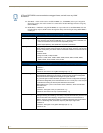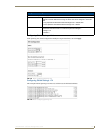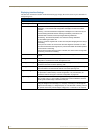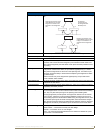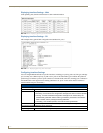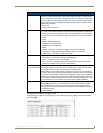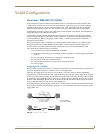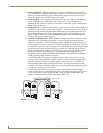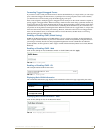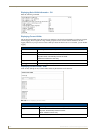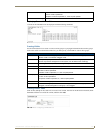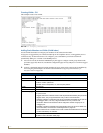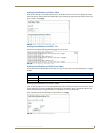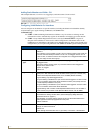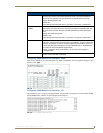
VLAN Configuration
124
NXA-ENET24 - Software Management Guide
VLAN Classification – When the switch receives a frame, it classifies the frame in one of two
ways. If the frame is untagged, the switch assigns the frame to an associated VLAN (based on the
default VLAN ID of the receiving port). But if the frame is tagged, the switch uses the tagged
VLAN ID to identify the port broadcast domain of the frame.
Port Overlapping – Port overlapping can be used to allow access to commonly shared network
resources among different VLAN groups, such as file servers or printers. Note that if you
implement VLANs which do not overlap, but still need to communicate, you can connect them by
enabled routing on this switch.
Untagged VLANs – Untagged (or static) VLANs are typically used to reduce broadcast traffic and
to increase security. A group of network users assigned to a VLAN form a broadcast domain that is
separate from other VLANs configured on the switch. Packets are forwarded only between ports
that are designated for the same VLAN. Untagged VLANs can be used to manually isolate user
groups or subnets. However, you should use IEEE 802.3 tagged VLANs with GVRP whenever
possible to fully automate VLAN registration.
Automatic VLAN Registration – GVRP (GARP VLAN Registration Protocol) defines a system
whereby the switch can automatically learn the VLANs to which each end station should be
assigned. If an end station (or its network adapter) supports the IEEE 802.1Q VLAN protocol, it
can be configured to broadcast a message to your network indicating the VLAN groups it wants to
join. When this switch receives these messages, it will automatically place the receiving port in the
specified VLANs, and then forward the message to all other ports. When the message arrives at
another switch that supports GVRP, it will also place the receiving port in the specified VLANs,
and pass the message on to all other ports. VLAN requirements are propagated in this way
throughout the network. This allows GVRP-compliant devices to be automatically configured for
VLAN groups based solely on endstation requests.
To implement GVRP in a network, first add the host devices to the required VLANs (using the
operating system or other application software), so that these VLANs can be propagated onto the
network. For both the edge switches attached directly to these hosts, and core switches in the
network, enable GVRP on the links between these devices. You should also determine security
boundaries in the network and disable GVRP on ports to prevent advertisements being propagated,
or forbid ports from joining restricted VLANs.
If you have host devices that do not support GVRP, you should configure static or untagged
VLANs for the switch ports connected to these devices (as described in the Adding Static Members
to VLANs (VLAN Index) section on page 128). But you can still enable GVRP on these edge
switches, as well as on the core switches in the network (FIG. 128).
FIG. 128 Security Boundaries
Port-based VLAN
1
2
9 3 4
10 11
12
13
14
5 6 7 8
15 16
18
19



